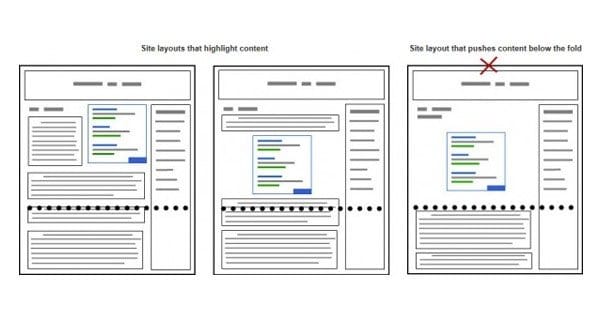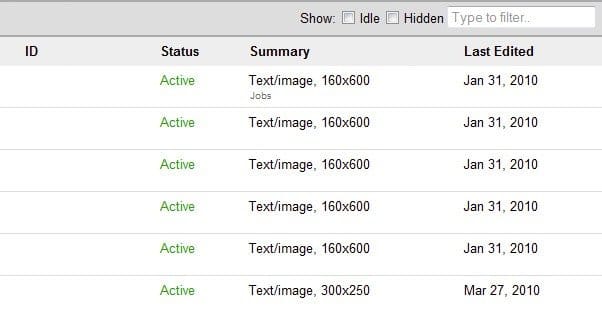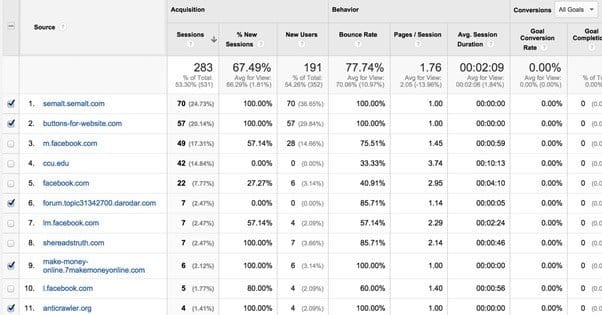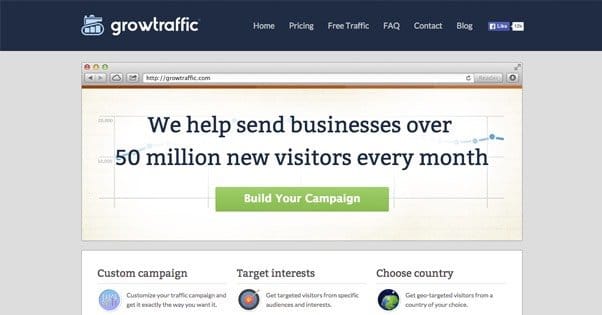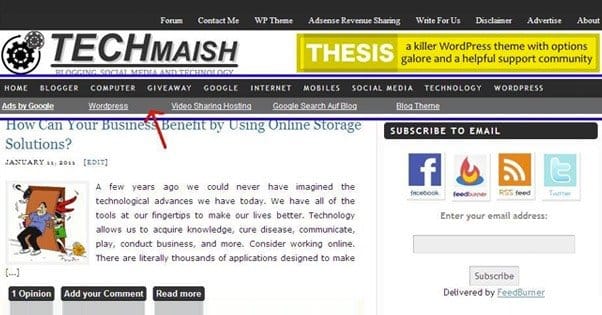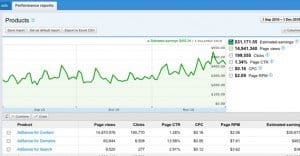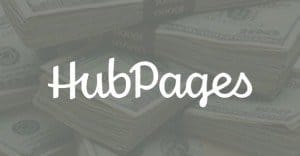How to Earn More Money from an AdSense Website
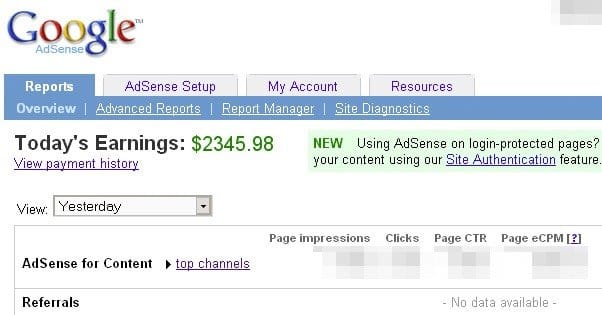
There’s a reason why Google’s AdSense is such an immense platform, and it’s not sheer force of personality. It works, and it can work very well, for bloggers both large and small. Of course, you have to use it right, and make sure you’re optimizing your site and setup for making money. Want to earn more with AdSense? You’ve come to the right place. I’ve compiled a ton of tips and information for making as much as you possibly can with the system.
One thing to note before we begin is that the people who can benefit the most from this information are the people with small-scale blogs. While I’m sure a site like Forbes could implement a few tricks to improve their income from ads, I’m not sure they need my help to do it. When you’re making tens of thousands or hundreds of thousands each month, you can afford to pay highly trained consultants to study your site on an individual basis. You don’t need to look for free information on the internet.
It’s the smaller blogs, the personal blogs, the blogs with monthly readers measured in the hundreds that I’m primarily talking to. These people can implement changes that mean the difference between profit and loss, or between ramen for dinner and something more gourmet.
Another thing to note is that AdSense scales with traffic. No matter what, the more traffic you have, the more you can earn. Optimizations help, but the best way to earn significantly larger chunks of change is to bring in more traffic. At some point, optimizing your marketing and traffic generation will have a larger effect than optimizing your on-site factors. Just remember the Pareto Principle; 80% of your returns come from 20% of your effort. When AdSense optimizations start having severely diminished returns, it’s time to swap to other methods.
Now, on with the tips!
Position Your Ads in More Visible Locations
This one will require you to do a little work to find out, because it varies from site to site. Every site has hotspots. Hotspots are places where users tend to click a lot, and where their eyes come to rest more often than not. In order to find these hotspots, you can run a heat map plugin like Crazy Egg. This will track where users click, and you can extrapolate from there. A lot, of course, will be on your CTAs and on your navigation.
Once you have identified hotspots, you need to put ads nearby. This will serve two purposes. One, it puts the ads in a position where more people are looking more often, so the ads are seen more often. Two, it helps catch a few accidental clicks. Google doesn’t want you to exploit accidental clicks, particularly on mobile, but they won’t penalize you for passively capturing them. It’s only if you do something exploitative, like too-small buttons next to each other on mobile, or buttons that move or shrink, or overlays with ads, that Google gets uppity.
Use Larger and More Attention-Drawing Ads
Larger ads take up more screen real estate, but they also take up more of the user’s consciousness and attention. Small ads, particularly tiny graphics, are easy to overlook. They get lost in site design, or they fall victim to banner blindness.
Larger ads have another advantage, which is making use of the space they are given. You can say more, present more detail, and be more beautiful in a larger amount of space. On top of that, larger ads are more likely to gain the occasional click just out of idle curiosity rather than the ad itself being successful.
Avoid the Odd Sized Graphic Ads
Google offers a bunch of different ad sizes. When you read their descriptions, Google lays them out under recommended and other, or “top performing” and other sizes. There’s a reason for this. The more people who use a particular size, the larger the audience is for that size of ad, and thus the more advertisers there are competing for the size. More competition means higher prices and better ads.
This is why you should, in general, stick to the ad sizes Google considers top performing. The standard sizes are going to have the most advertisers looking to fill them. The biggest advertisers will typically use the odd sizes as well, but perhaps at a worse rate or a lower fill rate. There are issues, is what I’m saying. Use standard sizes to earn more.
Make Use of Several Ad Units
There’s a bit of an unfortunate opinion that you can only have three ad units on a page at any given time. Google doesn’t like when you run more ads, and they can discontinue your account at any time, so people are afraid to experiment.
The root of this misinformation is the limits Google imposes. Rather than just three ad units, Google limits you to three standard units, three link units, and two search forms. That’s eight units per page, not three.
Now, I don’t recommend cramming all of those into the same page all the time. You typically only need one search bar, for instance. However, you can do, for example, three display ads and one link ad, or a 2/2 distribution. Test and customize to find what works best, just don’t be afraid of limits that don’t exist and pay attention to the limits that do.
Control Text Ad Colors
Text ads – the link ads, mostly – can be customized because they aren’t running graphics designed by the advertiser. The only important part the advertiser cares about is the copy. Therefore, you should customize the colors to match best with your site, so the ads don’t stand out too much as ads, and don’t drive people away by looking out of place.
You do, however, have to make sure the ads are somehow differentiated from normal site content. This means you can’t format them exactly the same as the rest of your site. Many advertisers simply add a small box or outline around them, which is sufficient as far as Google is concerned. You can use whatever method pleases you.
Don’t Let Ads Stagnate
Even the most brilliant ad in the world will lose the attention of the audience and stagnate if it isn’t changed over time. There’s more to it than just changing the content of the ads, though. Over time, the site layout you use becomes engrained on the minds of your readers. They know to expect an ad to appear in a certain position on your site, and they begin to mentally block out that portion of the site. Banner blindness is a real thing, and while an especially vibrant or potent ad can draw some people out of that blindness, it’s hard to break.
The easiest way to circumvent banner blindness, and to minimize the obnoxious ads that try to break through it, is to occasionally change up the positions, sizes, and locations of ads on your site. Novelty is more noticeable than any stagnant ad, and will help you earn more with those ads.
Appeal to Your Best Traffic Referrers
Visit Google Analytics and click Content, then to the AdSense section, and click on AdSense Referrers. This will bring up a list of the websites that have sent you traffic that has then gone on to click on your ads. Sometimes, you’ll find that a site that refers you a small amount of traffic tends to refer very valuable traffic. If site A is sending you 500 people and site B is only sending 100, it seems like site A is better to cater. However, if traffic from site B converts at 70% and traffic from site A converts at 5%, you’re earning more money from site B.
Once you know this, you can do things to encourage your relationship with site B, to get more referrers. You can even take the long game and tailor your ads and content to the users of that site, and network with them to help them grow.
Boost Internal Links to Increase Time on Site
You can’t have a good site without links that lead to other sites. If all your links are internal, you’re acting like a traffic trap, and Google doesn’t like it. It’s just bad SEO. Conversely, you can’t ignore internal links. If you have no internal links, people won’t be able to find the rest of your good content, and won’t think to look.
There’s a balance here you need to find, and this tip is encouraging you to skew it a little more towards keeping people on your site. Usually the way people do this is through sidebar related post boxes and navigation, but you can also include the occasional link in content as well.
What this does is encourages people to go from post to post, from content to content, while staying on your site. While on your site, they are exposed to more of your ads for a longer time, and will be further encouraged to click. Plus, a higher time on site and a lower bounce rate is always a good thing.
Target More Lucrative Keywords
Keyword research is good, but it doesn’t jive well with AdSense. You can’t tell Google which ads to serve, so the best you can do is tailor your content to the keywords that have the most value. Unfortunately, that also might not work. If Keyword A is worth $1 per click but has five variations worth 10 cents each, you have to get a lot of clicks on the ads worth $1 for the best value. On the other hand, if you have Keyword B has six keywords, each of which are worth 75 cents, your top end is lower but your low end is much higher. Think about broad keywords, rather than specific targets.
Buy Traffic to Boost Growth
Buying traffic is acknowledged in the AdSense terms of service as a valid technique, so long as you don’t abuse it. What does Google mean by abuse it? You need to buy legitimate traffic. That means you can buy ads or traffic from a third party service that provides real views from real people. You cannot buy a piece of software that sends traffic your way.
The problem with buying traffic to make money is that you’re almost always going to be spending more money on the traffic than you make from AdSense alone. That means you need other ways to make money that the purchased users can earn you, like product sales.
Make Certain to Maximize Fill Rate
You fill rate is the percentage of the time that there is an ad displayed in a position where an ad is slotted in. Anything less than 100% means there’s something wrong, either a lack of relevant ads for your keyword or some other problem.
Thankfully, fill rate shouldn’t be an issue. 99% of the time, your fill rate is maximized, simply because Google AdSense is so popular there are always ads for pretty much anything. Fill rate is more of a problem with mobile ads, and it has been decreasing as a problem recently as well. Still, it’s something you should check from time to time just to make sure that there isn’t a problem happening that you’re not aware of.
Optimize Ad Load Order
Content on your site loads in the order it is placed in the actual HTML files used for your site itself. A surprising number of people don’t notice or realize this, or they ignore it. That’s why you always want Google Analytics to load near the top, so it loads to track data as soon as possible.
When it comes to ads, you want to position the code for each unit in a relevant location on the page. Generally, you want content to load quickly, before ads. Still, content loads fast, so your ads can load immediately thereafter. The other thing is that you should position your ads themselves in the right order. It’s better to have ads that perform well load first, and the ads below the fold can load later. It’s a minor change, but it’s an effective one.
Use a Custom Google Site Search
Custom search is an ad unit for a reason, and that reason is because – like normal Google search – the search results can include sponsored links and/or ads. A custom site search integrated into your navigation is an ad unit that doesn’t look like an ad unit. Rather, it looks, and people use it like, a useful site feature.
The one thing to keep in mind is that site searches are only really useful if you have enough content to make a search worthwhile. If you only have a few dozen posts, people aren’t going to need a search to dig through them.
Use Premium Placements to Attract Better Advertisers
Placements are essentially a category that can be assigned to each ad individually on your page. This means that an advertiser will be able to choose between subpage ads and homepage ads, or between the header ad and the content ads, or how ever you choose to set it up.
Premium placements are those most highly sought after ad placements, typically the highest above the fold in the best positions, the ads with the best click rates. Advertisers will often pay a premium to access only this ad, without having to spend money on ad slots that don’t convert as well.
A link unit, horizontal, directly beneath your navigation, is generally one of the most useful types of ads you can run with AdSense. Display ads work here too, but are more subject to banner blindness because people expect an ad to be there. Link units can be formatted to look more like part of your navigation, which means it’s harder for a user to ignore them, which means they have more visibility and more clicks.
Consider Floating Ads
Note: This technique may not be allowed on Google Adsense. Please read their terms of service before implementing floating ads.
You know how some social media button plugins create a floating bar on the side of the screen that follows the user as they scroll down the page? You can do the same thing with ads. This is actually surprisingly effective, for two reasons. For one thing, a static element on a page where everything else scrolls is noteworthy and attracts attention. For another, it means the ad is always on display, rather than hidden once the user scrolls down a little. You can read more about how to implement this kind of floating ad here.
Switch and Swap Other Monetization Schemes
Sometimes, believe it or not, one type of advertising will cannibalize the value of another. Imagine this scenario: you’re running both Amazon Affiliates and Google AdSense on your site. Each month, you make $500 from Amazon and $300 from AdSense, when you average things out.
Taking out Amazon might not sound like a good idea; that’s an immediate $500 lost each month. However, what if taking it out results in more attention to your AdSense ads, and those end up making you $1,000 per month after the change? That’s a gain of $200 per month, and it doesn’t mean you can’t still use Amazon, it just means you need to find another way to do it.
This won’t always be the case. In fact, I’d venture to guess that most of the time, removing one monetization strategy won’t boost your other enough to cover the loss. However, it’s still worth checking out.
Create More Content
At the end of the day, AdSense is a numbers game. You want to make more money, which means you need more clicks to your ads. More clicks to your ads is a goal you can only really accomplish by bringing in more traffic. The best and easiest way to bring in more traffic is to get more incoming referrals to more different pages, for which you need more content.

 ContentPowered.com
ContentPowered.com
